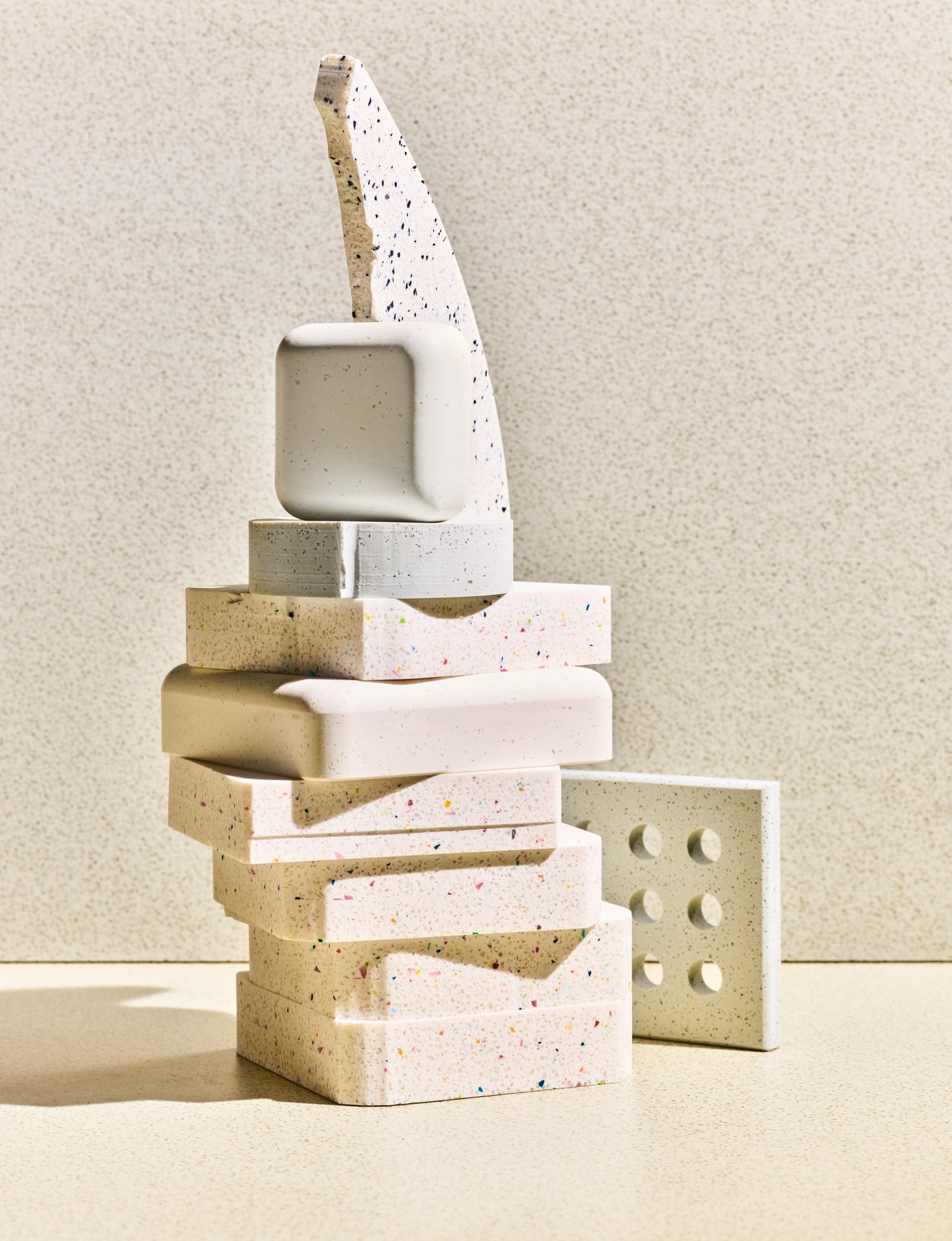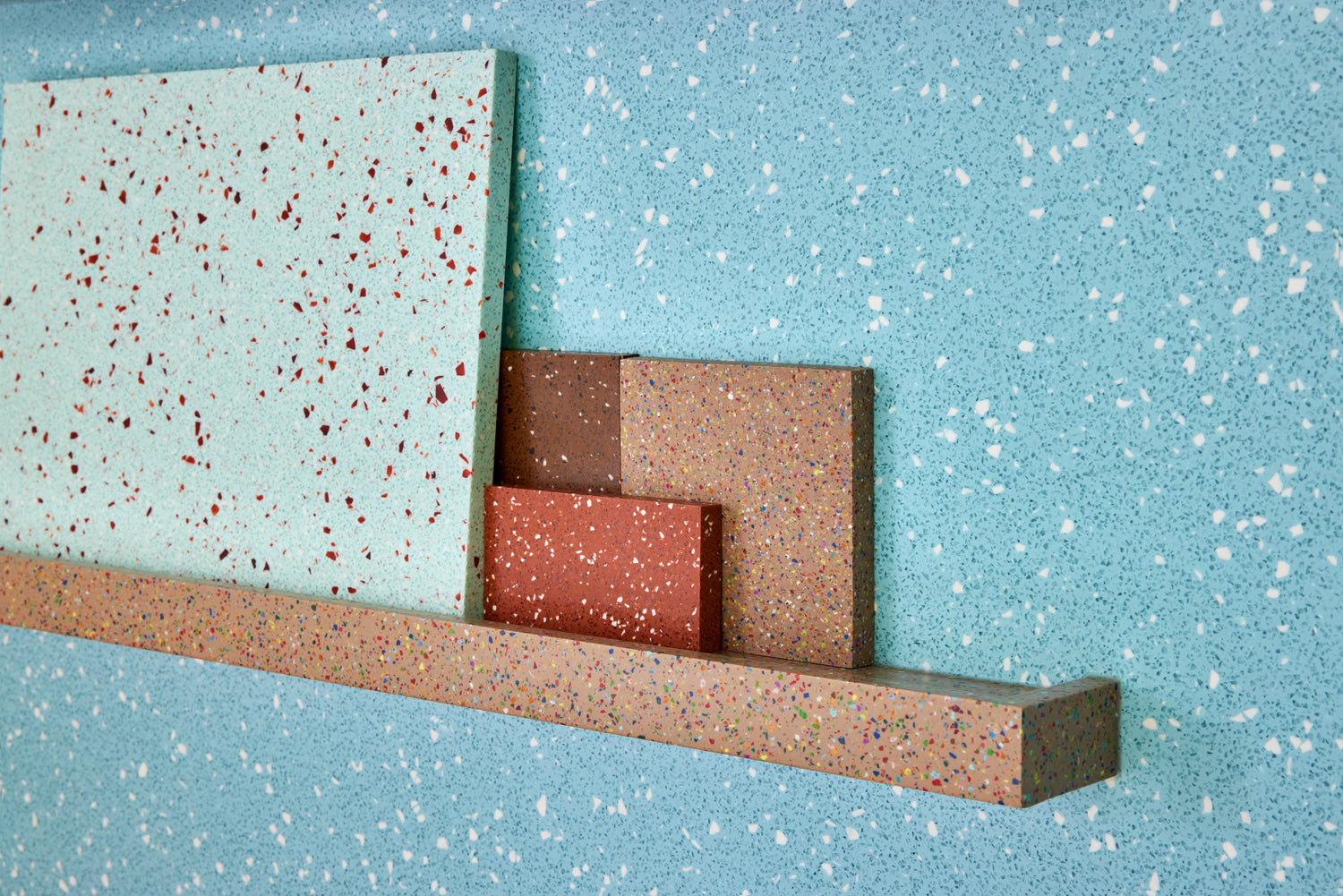Solid surface material made from recycled plastic
Durat is a polyester-based solid surface material developed in Finland. It contains approximately 30% recycled plastic and is 100% recyclable. Post-industrial plastic waste is granulated, giving Durat its distinctive texture. Durat is then either cast into sheets or formed into fixtures such as sinks using a mould. The standard size of a Durat sheet is 2900 x 800 x 12 mm. The sheet can be cast to a thickness of 9-18 mm.
The Durat solid surface material withstands heavy wear and tear and the three-dimensional surface gives a spectacular finishing touch to furniture. Durat can be used to make seamless sink and countertop units of virtually any size.
With its dense, seamless surface structure and high durability, Durat is hygienic and very easy to keep clean. This makes Durat an excellent choice for kitchen countertops, vanity units, sinks and several other bespoke furniture when distinctive appearance, durability and easy maintenance are required.

The warm, silky feel of the Durat surface and its durability are achieved by using the best raw materials available.
Durat is an extremely durable material, and its homogenous surface can be renewed with light sanding. The material is also easy to repair with Durat adhesive by a professional.
Highly durable Durat is easy to keep clean. The seamless surfaces do not collect dirt and can be easily cleaned.
Durat is plastic-based composite. No harmful silicon dioxide / silica dust is generated during fabrication.
Durat material has a 15-year warranty.

M1-classified product is proven to be low-emitting
The M1 Classification focuses on emissions from building materials and furniture into the indoor air, setting limit values for emissions of volatile organic compounds (VOC), formaldehyde, and ammonia as well as the acceptability of odour. The M1 Classification label on the product indicates that the product is low-emitting, and its use supports good indoor air. The M1 Classification label is a type I ecolabel limited to the product's indoor air emissions in accordance with EN ISO 14024:2018.
The Emission Classification of Building Materials is owned by The Building Information Foundation RTS sr and operated by The Building Information Foundation RTS’s subsidiary Building Information Ltd. The classification is overseen and developed by the principal committee Indoor Environment (PT 41) appointed by The Building Information Foundation RTS sr, in which representatives include construction products industry, developers, designers, and research institutes. The classification decisions are based on the document Classification of Indoor Environment 2018 (Sisäilmastoluokitus 2018), the general rules of the classification and the classification criteria. The Emission Classification of Building Materials has two levels: M1 and M2, M1 being the most stringent. M2 Classifications have hardly been granted, so the whole classification system is typically referred to as M1 Emission Classification.
